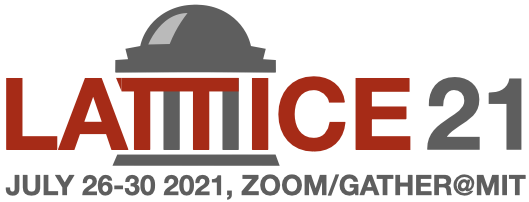Speaker
Description
A novel method is proposed to determine the quark-diquark potential together with quark and diquark masses in the framework of Lattice Quantum Chromo Dynamics (LQCD). Treating a baryon as a quark-diquark bound state, we construct the corresponding two-body potential from the equal-time quark-diquark Nambu-Bethe-Salpeter (NBS) wave function by demanding it to satisfy the Schroedinger equation. In so doing, the quark and diquark masses in the kinetic term of the Schroedinger equation must be determined self-consistently since their direct measurement is hampered by the color confinement. We determine the mass by demanding the p-wave excitation energy obtained from the Schroedinger equation to be equal to that obtained from the two-point correlator. After examining that the formalism gives results consistent with those of the prior works in the $c\bar c$ sectors, we consider the $\Lambda_c$ baryon sector to obtain the diquark mass and the quark-diquark potential. Numerical calculations are performed on a $32^3\times64$ lattice with a cutoff of $a \simeq 0.0907$ [fm] with the pion mass of $m_{\pi}\simeq 700$[MeV] generated by PACS-CS Collaboration. The charm quark mass in this work is $m_c=1.771(48)$ [GeV] and the diquark mass is $m_D=1.220(45)$ [GeV]. The latter lies above the naive estimations such as the $\rho$ meson mass $M_\rho=$1.098(5) [GeV] and two-third of the nucleon mass $2m_N/3$=1.049(12) [GeV].




